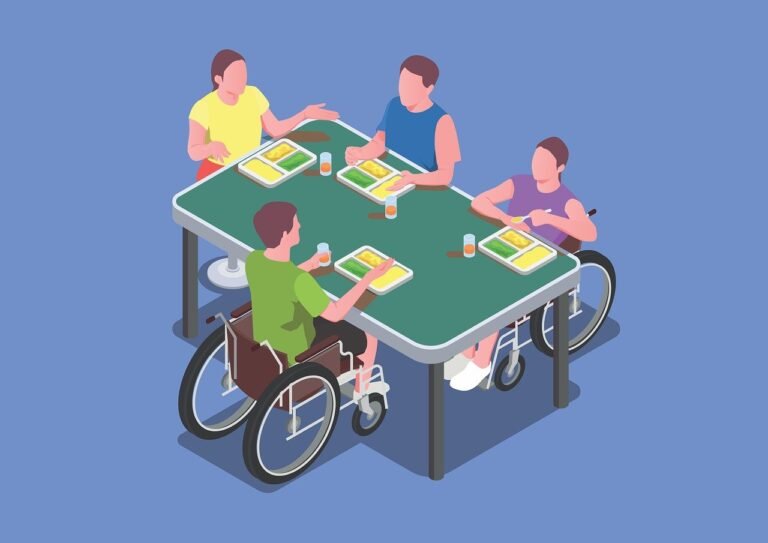5 Essential Steps to Mastering Emergency and First Aid in the USA
Introduction
Mastering Emergency and First Aid in the USA. This guide is intended to equip on-call specialists, wellness devotees, and concerned residents with the knowledge and skills critical to mastering crisis and emergency treatment systems.
Understanding Emergency Preparedness. Mastering Emergency and First Aid in the USA
“Preparedness is the path to a powerful response during any crisis.” – Master Tribute
Crisis preparedness begins with informed thinking and emergency response. It is fundamental to have a solid emergency plan customized for different situations. Just as important is putting together a flexible emergency treatment pack that unfolds effectively in various conditions—from the home to the work environment or even while outdoors. 5 Essential Steps to Mastering Emergency and First Aid in the USA
Action Items:
Create a crisis plan: Assess potential risks and create a contingency plan for different types of crises.
Assemble an emergency treatment pack: Include various basic items such as bandages, disinfectant, gloves, and necessary prescriptions.
Gaining Emergency Response Skills
“It is not enough to have the tools; one must also be proficient in using them,” said Dr. Lisa Moreno, leader of the American Foundation of Crisis Medication.
Once your organization is set up and your unit is assembled, acquiring the skills to use them honestly is essential. Signing up for certified courses such as CPR, AED activation, and first aid offered by the American Red Sore On or American Mother’s Grave Affiliation can save lives. Experts emphasize the importance of engaging in preparation for gathering confidence and expertise. 5 Essential Steps to Mastering Emergency and First Aid in the USA
Expert Review

Jonathan Smith, a carefully prepared EMT, and instructor, observes that “practical experience gained from crisis response preparation is critical. It enables people to learn lifesaving techniques in a stressful situation.” can act.” Public spaces, neighborhood clinics, and local groups of firefighters often host such training, making it open to the general population. Mastering Emergency and First Aid in the USA
Action Items:
Sign up for lifesaving courses: Find nearby CPR, AED, and emergency treatment courses.
Participate in exercises: Participate in local area crisis response exercises to apply your skills in a recreated climate.
Stay Aware of current conventions and practices by attending extra classes or online updates.
Basic Life Support (BLS) Techniques
A true story illustrates the impact of BLS preparation: “An explorer’s life was saved extraordinarily thanks to CPR by an individual trail participant who did essential BLS preparation.
Key Approaches to Learning:
Use of CPR and AED: Secure skills to perform cardiopulmonary resuscitation (CPR) and use computerized external defibrillators (AED).
Key Approaches to Learning:
Use of CPR and AED: Secure skills to perform cardiopulmonary resuscitation (CPR) and use computerized external defibrillators (AED).
Gagging Reaction: Understand the Heimlich maneuver and various procedures to help someone who is choking. Moving on from our depiction of the lifesaving consequences of BLS preparation, it is important to note that BLS procedures go far beyond CPR and gagging reactions. These institutions intend to house patients until a full medical evaluation is accessible. A core skill is monitoring severe die-offs. Dr. James Patterson, an injury specialist, declares, “Prompt and correct activity to control drainage can significantly increase the rate of recovery in cases of injury.” Applying direct tension, using a tourniquet, and compressing wounds are essential skills that distinguish critical time points. Mastering Emergency and First Aid in the USA
Equally important are the monitoring conventions for trauma, a dangerous condition that often accompanies severe injury or illness. Dr. Anne Kramer, a trained crisis medicine professional, advises, “Understanding the signs of shock and how to monitor it, such as accurately observing the patient and maintaining core temperature levels, is essential for BLS. is another indispensable ingredient.” 5 Essential Steps to Mastering Emergency and First Aid in the USA
Further BLS Skills to Master:

- Learn how to control drainage with direct tension.
- Appropriate use of tourniquets.
- Pressure on the wound.
Shock on board: Recognize and treat shock by properly observing patients and preventing hypothermia. Mastering Emergency and First Aid in the USA
Expert Insights:
“Predictive recertification and BLS practice skills are fundamental as principles and recommendations evolve in light of the most recent logical research,” quoted Crisis Administration chief Dr. Emily Silva. It is associated with learning methods once, keeping information fresh, and skills sharp. 5 Essential Steps to Mastering Emergency and First Aid in the USA
Action Items:
Attempt BLS Certification: Regularly attend courses for BLS certification; it is constantly ready to guarantee you. Practice consistently: Use drills and repetition activities to keep your skills sharp.
Stay up-to-date with deductions: Follow updates from definitive bodies, for example, with recommended procedures in the American Heart Relationship Life Support.
First Aid Basics
“Understanding basic emergency treatment can help you get help before specialist help shows up.” – Knowledgeable.
Essential Skills:
Situational Assessment: Learn how to proactively assess what’s happening to work safely and honestly. Caring for Common Injuries: Become an expert in treating cuts, abrasions, and breaks with skill.
Manage health crises: Understand the signs of seizures, adverse sensory reactions, and other health crises, and respond appropriately.
Past the central information on the treatment of cuts, uses, and breaks, principles of medical aid include appropriate responses to additional complex conditions, for example, harm and heat-related illnesses. Providing information to manage such crises is essential in the US, where natural conditions can change drastically. 5 Essential Steps to Mastering Emergency and First Aid in the USA
Expert Review

According to Dr. Rebecca Harsh, director of the Public Poison Control Center, “Prompt and correct action is essential in cases of harm. Knowing to recognize the type of poison and administer the correct emergency treatment can be lifesaving. Time is running out for medical help.” She focuses on the importance of being educated about common household substances that can be toxic and assumes that openness leads to progress. 5 Essential Steps to Mastering Emergency and First Aid in the USA
Further Essential First Aid Skills to Embrace: Mastering Emergency and First Aid in the USA
Injury Response: Find out how to recognize the different types of injury and follow the appropriate emergency treatment response, including using activated charcoal and when to seek immediate medical intervention.
Heat-Related Illnesses: Understand how to recognize and treat heatstroke and heatstroke, which can be fundamental during high-temperature conditions, especially in the diverse US environment. Mastering Emergency and First Aid in the USA
More: 5 Vital Steps to Enhance Healthy School Lunches in the USA
Expert Insights:
“It’s vital to keep your first aid training current. With new advancements and understandings in medical science, techniques get refined,” emphasizes Dr. Lionel Bates, a first aid instructor and emergency responder. “Regular refresher courses not only remind individuals of the procedures but also introduce them to updated best practices.” 5 Essential Steps to Mastering Emergency and First Aid in the USA
Action Items:

Teach about natural emergencies: Visit studios to manage injuries and conditions specific to your district’s environment, such as frostbite in colder areas or heatstroke in hotter regions.
Updates on Poison Control Measures: Stay up-to-date with poison control experts and public policy recommendations.
Boost preparedness: Take additional emergency medicine classes annually to stay proficient with basic and advanced first aid procedures.
Emergency Communication and Reporting
The aftermath of the near-catastrophic event showed the undeniable value of competent correspondence: “Because members of a group of people knew exactly how to report a crisis, heroes could respond quickly, saving lives.”
Communication Strategies:
Organize crisis contacts: Prepare a list of numbers for various crisis management.
Use emergency applications and devices: Learn all about the various applications that can work with fast reaction times and provide essential data during an emergency. Mastering Emergency and First Aid in the USA
Compelling crisis correspondence isn’t just about the speed and clarity of the announcement but also about having the correct data. Dr. Carlos Rivera, an expert on disaster management, expresses, “Resilience in crises often depends on the practicality and accuracy of communications. Falsehoods can destroy rescue efforts and put lives at risk.” “With this in mind, it is essential for people to know about the public crisis number, 911, and to provide compact, crucial details during the call. 5 Essential Steps to Mastering Emergency and First Aid in the USA
Enhancing Emergency Communication:

To improve emergency communication, experts recommend regular training for citizens on how to clearly articulate the nature of the emergency, the specific location, and any immediate dangers to rescuers. Additionally, the use of standardized phrases and keywords can help operators quickly dispatch the appropriate services. Mastering Emergency and First Aid in the USA
Expert Insights:
“In a crisis, stay as calm as can be expected, and remember that the operator is there to help guide you through the cycle,” says Heather Nguyen, a specialist at Metropolitan Emergency Call Focus. And there may be a quiet correspondence. A significant effect according to time and results.” She also urges the general public to be educated about text-to-911 administrations, which may be accessible in certain regions where it is not safe or imaginable to settle on a decision. Mastering Emergency and First Aid in the USA
Action Items:
Retaining Crisis Numbers: Memorize 911 and neighborhood non-crisis numbers and focus on poison control.
Excellent Call Correspondence: Practice situations to ensure your ability to convey essential nuances quickly and successfully.
Attention to Text-to-911 Administrations: Include text administrations for crisis correspondence and understand where voice calls are unimaginable. Mastering Emergency and First Aid in the USA
Ongoing Training and Education. Mastering Emergency and First Aid in the USA
Continuous acquisition and refinement of skills is essential: “The most solid crisis response comes from those who routinely train. It’s a commitment to protect yourself and others.” – Crisis Preparedness Statement. Mastering Emergency and First Aid in the USA
Training Opportunities:
Stay up-to-date with current regulations: Routinely activate your BLS and emergency treatment information as regulations are updated.
Participate in preparing programs: participate in the courses and neighborhood local area crisis response programs.
Emphasizing Lifelong Learning:
Lasting progress is fundamental within a crisis preparedness setting. This continuing schooling obligation guarantees that people and professionals remain competent in modern lifesaving techniques. As Dr. Amanda Clark, a leading expert in crisis medicine, comments, “The field of crisis response is constantly evolving, and it’s important to stay informed. By constantly updating your skills, We calibrate our senses with the latest test. And the response during an emergency to be more powerful.” 5 Essential Steps to Mastering Emergency and First Aid in the USA
Expert Opinions on Continuous Training:
Dr. Clark’s promotion of routine preparedness resonates in the local area of crisis response. According to Jesse Harper, Program Facilitator for CERT (People’s Group Crisis Reaction Group), “Quality admissions and updated instructional meetings contribute greatly to the strength of a local area. These anecdotal information are actionable.” I change.” Experts agree that training development aims to develop a strong foundation that can withstand the stress of a real crisis. 5 Essential Steps to Mastering Emergency and First Aid in the USA
Action Items:
Participate in neighborhood drills and simulations: Meet with local area crisis management to participate in mock drills, which simulate real situations. Mastering Emergency and First Aid in the USA
Integrate innovations: Stay educated and trained on the latest crisis hardware and innovations, ranging from the latest defibrillators to specialized crisis gadgets.
Add resources to the expert turn of events: For those in the crisis management field, attending conferences, studios, and courses can open the door to top-down information and systems administration that improves one’s preparedness skills. Advancing preparedness and school education in crisis preparedness influences individual preparedness and ensures that the USA has a robust and comprehensive disaster response framework in place. 5 Essential Steps to Mastering Emergency and First Aid in the USA
Conclusion
Finding ways to dominate crisis and emergency treatment is a strong demonstration of stewardship for yourself and your local area. As highlighted by professionals on the call, “one prepared individual in a family or neighborhood can be the catalyst for significant change in the outcome of a crisis.”
Embrace this source of inspiration, arm yourself with tools, and focus on the constant search for authority in crisis and emergency treatment. Your actions can save daily existence, starting with your choices today. Mastering Emergency and First Aid in the USA
FAQS
What is the importance of learning emergency and first aid skills?
Being equipped with emergency and first aid skills can save lives during critical situations. Whether it’s a minor injury or a life-threatening emergency, knowing what to do in those crucial moments can make a significant difference in the outcome.
What are the essential components of first aid training?
First aid training typically covers a range of topics including CPR (Cardiopulmonary Resuscitation), basic wound care, dealing with choking, fractures, burns, and understanding how to use AEDs (Automated External Defibrillators). Additionally, understanding how to assess a situation and prioritize care is crucial.
Where can I receive first aid training in the USA?
There are various organizations across the USA that offer first aid training, including the American Red Cross, National Safety Council, American Heart Association, and local community centers. Many workplaces also provide first aid training to their employees.
Is first aid certification necessary?
While it may not be legally required in all situations, having first aid certification can enhance your credibility and confidence in providing assistance during emergencies. Many employers, especially those in healthcare, education, and childcare sectors, require employees to be certified in first aid.
What should I do if I encounter someone who needs first aid?
Assess the situation for safety first. If it’s safe to do so, approach the person calmly and determine the severity of their condition. Call emergency services immediately if needed. Administer first aid according to your training and continue to monitor the person’s condition until help arrives.
How can I stay updated on first aid techniques and guidelines?
It’s important to regularly refresh your first aid knowledge and skills. You can stay updated through refresher courses offered by organizations like the American Red Cross or by reviewing online resources and attending workshops or seminars
Are there any legal considerations when providing first aid?
Good Samaritan laws exist in many states to protect individuals who provide reasonable assistance during emergencies from legal liability. These laws vary by state, but generally, they provide immunity from civil lawsuits as long as care is provided in good faith and without expectation of compensation.
What are some common misconceptions about first aid?
One common misconception is that you need to be a medical professional to provide effective first aid. In reality, anyone can learn and perform basic first aid techniques. Another misconception is that first aid is only necessary for physical injuries, but it also includes psychological support in some cases.
Can first aid training help in non-emergency situations?
Yes, first aid skills are valuable not only in emergencies but also in everyday situations. They can be useful in addressing minor injuries, sudden illnesses, or providing assistance until professional medical help arrives
How can I encourage others to learn first aid?
You can promote first aid awareness by organizing workshops or training sessions in your community, workplace, or schools. Share your own experiences of how first aid training has been beneficial and emphasize its importance in saving lives. Additionally, lead by example and make first aid training a priority for yourself.






